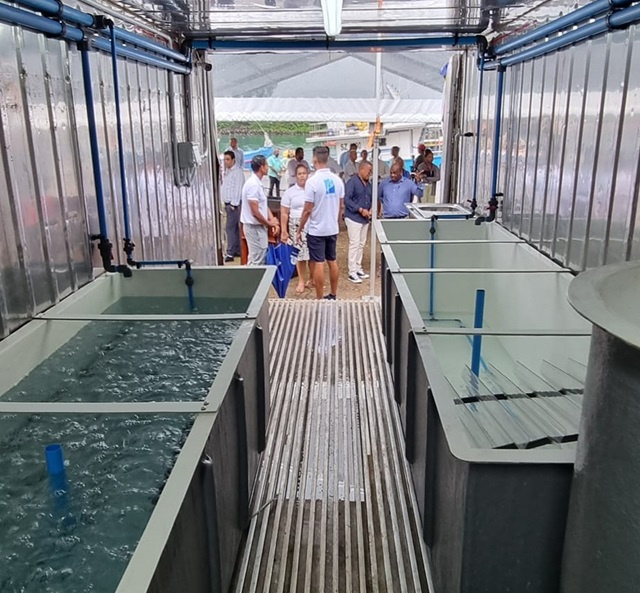Seychelles' first aquaculture containerised echinoderm hatchery opens

The new hatchery is located at the Providence fishing port on the main island of Mahe. (Seychelles Aquaculture/Facebook)
(Seychelles News Agency) - Seychelles' first aquaculture containerised echinoderm hatchery, which is a temporary sea urchin structure, opened at Providence on Thursday as part of the island state's efforts to push forward its aquaculture sector.
Located at the Providence fishing port on the main island of Mahe, the new temporary hatchery has two containers equipped with customised equipment. The hatchery was designed and built by a South African company, Deep Blue Aqua, and can produce 18,000 to a maximum of 288,000 sea urchins and sea cucumbers.
The Echinoderm Hatchery is part of the third South West Indian Ocean Fisheries Governance and Shared Growth Project (SWIOFish3), a government-led project funded by the World Bank and the Global Environment Facility (GEF), at the cost of $120,604 (SCR 1.73 million).
In his opening address, the Minister for Fisheries and Blue Economy, Jean-Francois Ferrari, said that although he has been sceptical of the projects, he stands proudly today.
"We are moving in the direction of producing hatchlings here in Seychelles. This is good news for aquaculture in the country," he said.
Ferrari added that the government wanted to see a sub-industry being able to sustain itself from beginning to end.
The head of the Aquaculture Department at the Seychelles Fishing Authority, (SFA), Aubrey Lesperance, said the permanent structure is due to take off in the fourth quarter of this year or next year pending the approval of SFA's board.
"We had a small delay with the original plan for the hatchery, however through the SWIOFISH project, we have been able to start with this one," he said.
The permanent hatchery will also be based at Providence on the eastern coast of Mahe and will focus on fish for 75 percent of its production. The rest will consist of sea urchins, ornamental fish and maybe a little bit of coral.
The hatchlings produced will help the businesses in that sector with their own production.
Lesperance added that while there are aims for the sea urchins and sea cucumbers produced to be used for commercial use, there will also be some provided to the University of Seychelles (UniSey) for research and data purposes.
"The hatchery itself is like a laboratory, so for students at UniSey currently following their studies, we have an agreement with the institution that will allow them to perform practical studies here as well in addition to the theories they are learning," he explained.
The same applies to students at the Seychelles Maritime Academy(SMA), where SFA has a facility on its campus.
The hatchlings produced will also help with other programmes aimed at re-stocking sea urchins and sea cucumbers in the wild.
Plans for creating an aquaculture sector in Seychelles, a 115-island archipelago in the western Indian Ocean, started in 2007 with the creation of a Mariculture Master Plan (MMP).





